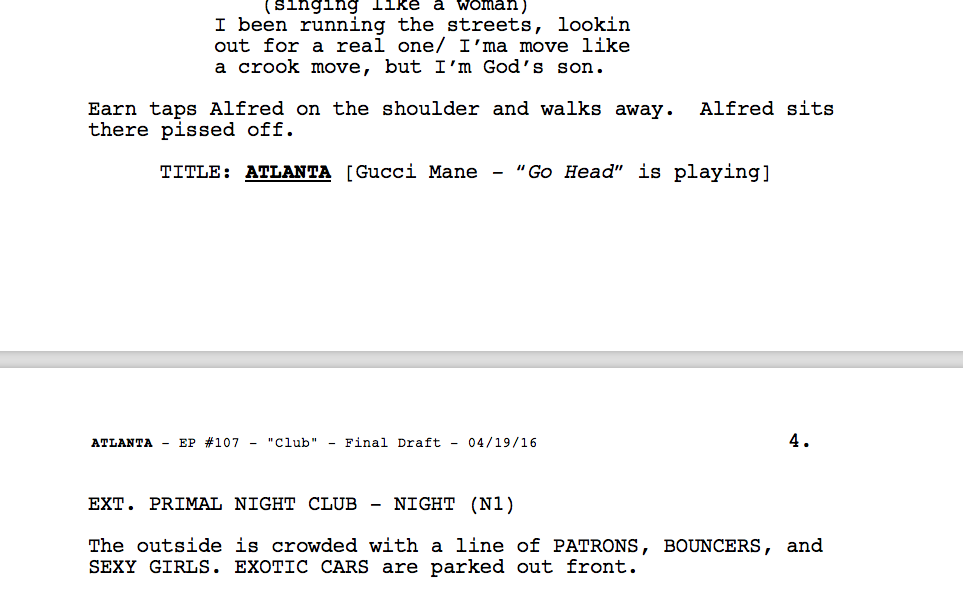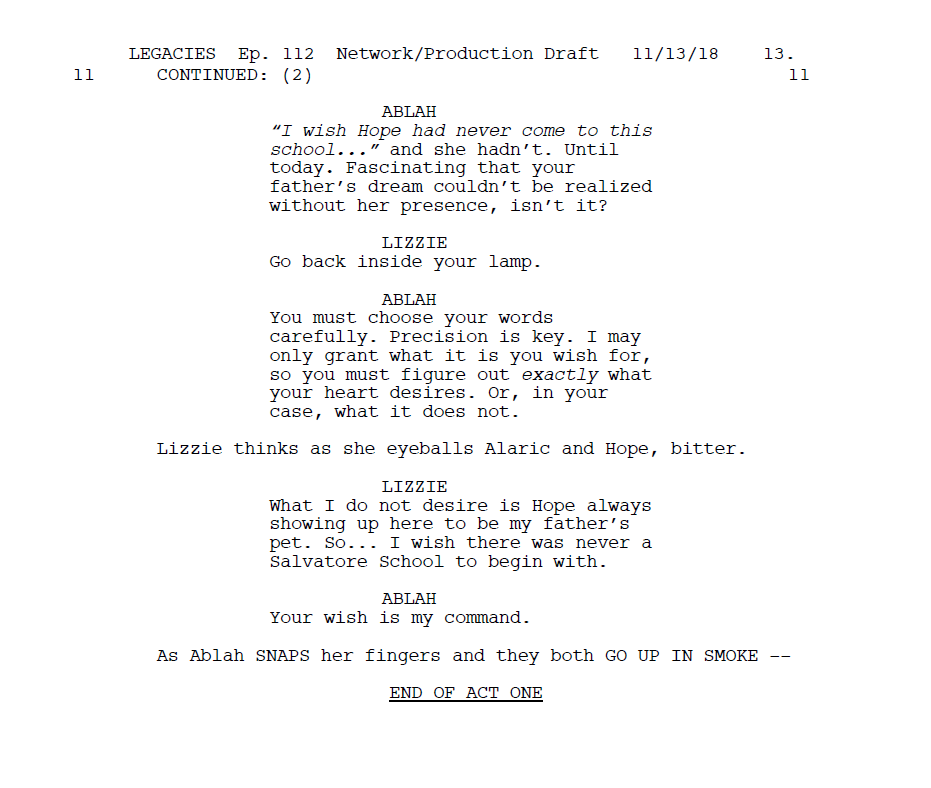FORMATTING YOUR SPEC SCRIPT WHILE SOCIAL DISTANCING: A PRIMER - PART 2
One thing is certain right now — you can’t go anywhere, so what better time than this moment to work on submission materials for a TV writing program or fellowship (At your own pace, of course. It’s important to factor in some time for self-reflection, petting your cat, and staring at walls).
We know the WGF Library and our trove of current TV scripts are typically an invaluable resource to those writing spec episodes, so while fellowship season is also quarantine season, we will try to post a few examples once a week of how some popular shows approach format.
We hope this information gives you what you need to format your spec. Our plan is to cover as many shows as possible, so if you don’t yet see the show you’re spec-ing, check our previous posts or send us an e-mail at library@wgfoundation.org. Even when we’re not all at home, you can e-mail us here with formatting and other questions.
While we cannot send you scripts in their entirety (We are not the copyright owners and do not have the right to distribute scripts beyond the physical library), we can dig through the scripts and try to get you the info you need. Also, where possible, we’ll try to link to where award-nominated scripts and early drafts of pilots are available online.
ATLANTA (FX)
Average page count: 28
Average number of scenes per script: 24 (Although for this particular show, it varies widely)
Broken into acts ? No
Other things to consider:
Sometimes Atlanta scripts contain a title card, following by what song is heard on screen, written out [In brackets.] In scripts that contain a title card, it typically falls between page 3 and page 7. Including this in your script with a song that really fits would illustrate how well you know the show’s tone.
In the description, the writers generally make reference to specific songs that are playing in the background, listing the artist and song title.
When new characters appear on screen, their names are always CAPITALIZED. Any TEXT THAT APPEARS ON SCREEN is often capitalized and bolded.
The writers capitalize SOUNDS and ITEMS that they want to draw your attention to.
Find the pilot and some award-nominated scripts from Atlanta here.
EVIL (CBS)
The average page count: roughly 54
Average number of scenes per script: 43-49
Broken into acts? Yes, scripts include one very long teaser (16-20 pages long) and 4 additional acts. The other acts range from about 5-10 pages.
Scripts begin with TEASER at the top, centered, bolded, in all caps and underlined. The teaser ends with "END OF TEASER" also centered, bolded, in all caps and underlined. Act breaks are formatted exactly the same. ACT ONE (or whatever act it is), centered at the top of the page in bold and underlined, then END OF ACT ONE.
Other things to consider:
Scene headings are in bold
Description is very sparse and pages consist mostly of dialogue with description rarely going over one line (Save for when the writers are establishing visually and auditorily what's going on either at the beginning of a scene or in moments that don't have a lot of dialogue).
The writers use a lot of underlining and bold to put emphasis on certain things in the description
SOUND EFFECTS are almost always written in capital letters
Characters names are often written out first and last name.
Read an early draft of the Evil pilot here.
THE GOOD DOCTOR (ABC)
Average page count: 55.
Average number of scenes per script: 50, but they can range anywhere from 45 to 55.
Broken into acts? Yes, 6. The first act is typically the longest, averaging about 16 pages. The rest of the acts are usually between 6-9 pages.
Other things to consider:
Opening credits title card typically occur around page 6. It’s usually preceded by a scene transition and the words OPENING CREDITS are bolded, capitalized and centered.
Good Doctor scripts are very clean and direct without a lot of special formatting.
The thing to remember when writing a Good Doctor spec is that the show is procedural in nature and usually involves solving a medical case-of-the-week.
Read an early draft of the pilot for The Good Doctor here.
LEGACIES (THE CW)
Average page count: 40-43 pages
Average number of scenes: 40
Broken into acts? Yes, 6. Each act is about 6 to 10 pages.
Usually around page 2, the writers cue the opening title by putting TITLE CARD in bold on the left side of the page, then continuing right along with the next scene or shot on the next line.
Act breaks are formatted with ACT ONE (or whatever it is) at the top of the page, underlined and centered. Act endings are formatted END OF ACT THREE (or what ever act it is), also centered and underlined.
In the following excerpt, notice Hope’s voice-over as well as formatting of text seen on a sign, then text seen as students are writing:
SUPERSTORE (NBC)
Average page count: At least in the first season, which is what we have in the library, it’s very rare to see a Superstore script over 34 pages or under 33.
Average scene count: 10-20
Broken into acts? Yes, 4 and everything is very tight.
Other things to consider:
Scripts open with a 2-3 page cold open. First page begins with COLD OPEN centered, underlined, in bold, then ends with MAIN TITLES also centered, underlined and in bold on page 2 or 3.
Act breaks are formatted -- ACT ONE centered, underlined and bold; END OF ACT ONE same format. Act breaks often include a FADE OUT. in all caps, underlined on the right hand side, just preceding the end of an act.
After the cold open, the first act runs from about page 4 to page 11. The second act runs from page 12 to page 19. The third act runs from page 20 o 29. And the fourth act runs from 30 to 33 or 34. This seems to be how they keep their page count consistent.
Episode endings: END OF EPISODE, centered, underlined and bold just like an act break.
All scene headings are underlined.










